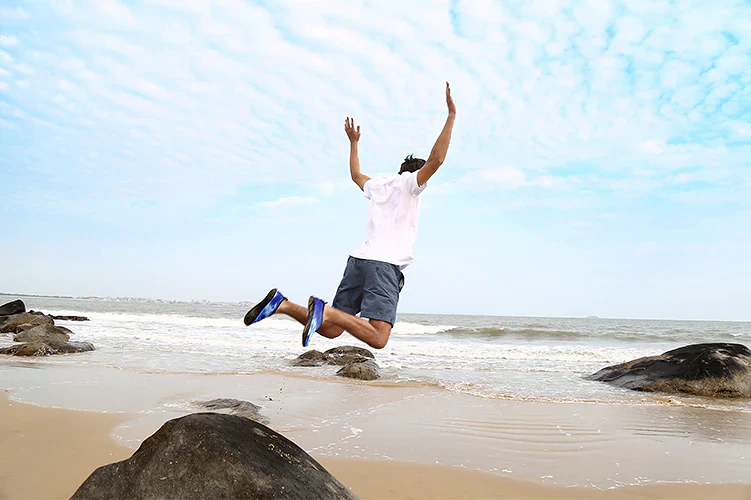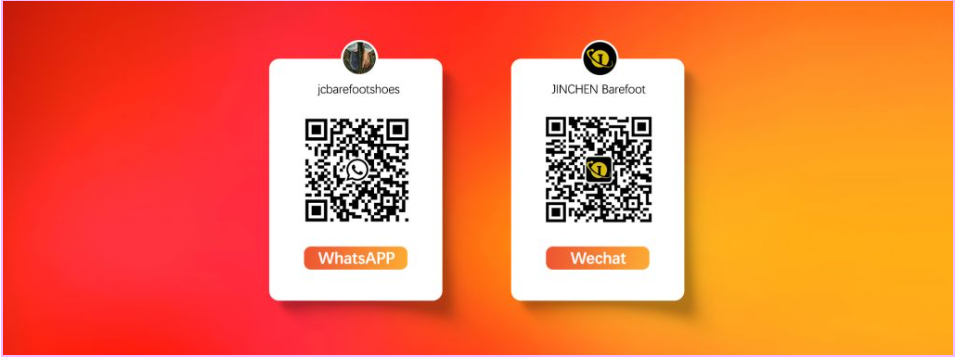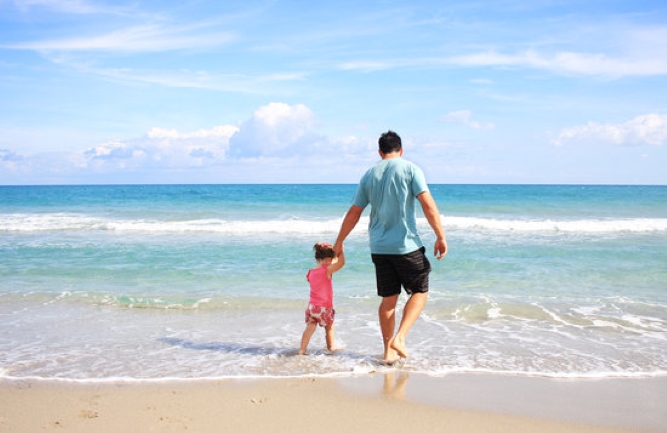Summer beaches are a popular vacation destination for many people. When the afterglow of the setting sun bathes the golden sand, when the rhythm of the tides gently kisses the coastline, when fine white sand seeps out from between our toes, and when the cool waves gently caress the instep of our feet, we can’t help but take off our bound shoes, longing to feel the gifts of nature in the most primitive way. This experience of getting close to nature on the skin is intoxicating. However, behind this romance, is walking barefoot really as carefree as imagined?Let’s dissect this “sweet adventure” for you from a professional perspective.
1.Why do people like to walk barefoot on the beach
Natural sensory enjoyment
Soft touch: The granular texture of fine sand stimulates the nerves on the soles of the feet, bringing a unique tactile pleasure, similar to a natural “foot massage”.
Comfortable temperature: The sand grains warmed by the sun during the day (or the cool sand in the evening) can transfer warmth through the soles of the feet, making people feel relaxed.
Connecting with nature: Direct contact with the earth, seawater and sand can give people a primitive pleasure of being close to nature and temporarily break free from the constraints of modern life.
Health and physical benefits
Promoting blood circulation: The uneven sandy surface forces the foot muscles to work harder, improving microcirculation, similar to a gentle exercise.
Stimulating acupoints: According to traditional Chinese medicine, there are many reflex zones on the soles of the feet. The friction of sand grains may indirectly stimulate these areas (although the scientific evidence is limited).
Strengthening foot muscles: Walking on soft sandy ground requires balance and can exercise the foot and calf muscles that are rarely used in daily life.
Psychological and emotional value
Stress-relieving effect: The combination of the sound of waves and barefoot sand walking can trigger a sensory relaxation response and lower the levels of stress hormones (such as cortisol).
Childhood memory association: For many people, playing with sand barefoot is a happy childhood experience, and repeating this behavior in adulthood evokes pleasant memories.
A sense of freedom: Taking off shoes symbolizes a temporary escape from social rules (such as the constraint of “shoes must be worn”), giving people a sense of liberation.
Environmental and practical factors
Avoid getting sand in your shoes: Walking on the beach with shoes on is more likely to cause your feet to rub or accumulate sand. Going barefoot is more convenient.
The characteristics of the beach: The wet sand is firm and elastic (suitable for running), while the dry sand is soft and sunken. Different tactile sensations add fun.
2. Barefoot Walking on the Beach - The Risks Behind Freedom
Walking barefoot on the beach does indeed bring a unique sense of comfort. Scientific research shows that touching the ground barefoot can stimulate the nerves in the soles of the feet, improve balance ability, and even help relieve foot fatigue. However, the beach environment is not completely harmless. Walking barefoot may pose the following risks:
🔥 High-temperature burns: The temperature on the beach at noon in summer can reach over 50℃. Walking barefoot may cause burns.
⚠️ Sharp object injury: Shell fragments, reefs, glass shards, and even Marine creatures (such as jellyfish, sea urchins) may scratch or stab the soles of the feet. According to statistics from the Hawaii Department of Health, there are approximately 500 to 800 cases of foot injuries (such as coral cuts and sea urchin stings) caused by beach activities each year, with tourists accounting for 70% of them.
🦠 Bacterial infection: Bacteria and parasites (such as hookworms) may exist on the beach, especially in wet areas.
🏃 Sports injury: When running barefoot or doing beach sports, the lack of support may increase the burden on the arch of the foot and the ankle.
3.How can we enjoy the feeling of going barefoot while ensuring safety?
If you want to experience the freedom of going Barefoot but don’t want to take risks, Barefoot Shoes are the best choice. The design concept of barefoot shoes is “close to barefoot, but safer”, and they have the following features:
✅ Ultra-thin sole – provides sufficient ground feedback, allowing your feet to still sense the texture and temperature of the sand.
✅ Wide toe design – allows the toes to stretch naturally and avoids the squeezing sensation of traditional shoes.
✅ Puncture-resistant material – prevents sharp objects such as shells and crushed stones from pricking the soles of the feet.
✅ Breathable and quick-drying – dries quickly even when wet by waves, avoiding stuffiness and unpleasant odors.
✅ Anti-slip and wear-resistant – provides better grip on slippery rocks or beaches.

4. Barefoot Shoes vs. Traditional beach Shoes: A Revolution about Freedom
| Feature | Regular Slippers | Sport Sandals | Barefoot Shoes |
| Ground Feedback | ❌ Fully Blocked | ⚠️ Partially Blocked | ✅ 90% Retained |
| Protection | ⚠️ Only Heat Protection | ✅ Basic Protection | ✅ Full Protection |
| Fit | ❌ Easily Slips Off | ⚠️ Partially Restrictive | ✅ Barefoot-like Fit |
| Performance | ❌ Restricts Movement | ⚠️ Reduces Flexibility | ✅ Enhances Performance |
Barefoot Philosophy: Seeking a balance between civilization and wildness
We believe that true freedom comes from protected liberation. Barefoot shoes represent not only a product but also a philosophy of life:
Reverence for nature: Acknowledging that the modern environment is no longer as pure as it was in our ancestral times
Respect for the body: Enjoy freedom while providing scientific protection
The pursuit of quality: Achieving the ultimate experience of “wearing as if nothing existed” with meticulous craftsmanship
5. Beach scenarios suitable for barefoot shoes
🌅 Beach walk: In the early morning or late evening, walk along the coastline barefoot. You can feel the fineness of the sand without fear of high temperature or sharp objects.
🤿 Wading activities: When snorkeling or beachcombing, barefoot shoes can prevent scratches from rocks while not affecting underwater flexibility.
🏐 beach sports: when playing beach volleyball or running, barefoot shoes provide better grip and foot support.
🏖️ family outing: children and the elderly wear barefoot shoes to avoid accidental scratches and enjoy the fun of going barefoot.
6. How to choose a pair of barefoot shoes suitable for the beach?
As a professional barefoot shoe manufacturer, we are well aware of what qualities a good pair of barefoot shoes should possess:
Material: Quick-drying breathable mesh fabric combined with anti-odor inner lining, suitable for humid environments
Sole: Ultra-thin yet wear-resistant rubber sole, maintaining touch while preventing puncture
Design: Ergonomic three-dimensional cutting to avoid friction points
Fixation: Elastic straps or structures that fit the foot shape to ensure they do not fall off during movement
Conclusion
The freedom of going barefoot should not come at the cost of safety. The protection of civilization should not sacrifice the original joy. Walking barefoot on the beach is romantic, but safety should not be ignored. Barefoot shoes allow you to enjoy the freedom of going barefoot while avoiding potential risks, making them an ideal choice for beach trips.
This summer, let’s put on professional barefoot shoes, feel the fineness of the beach and the coolness of the waves, let our feet breathe freely and at the same time receive thoughtful protection! 🌊 👣
Would you like to know more about barefoot shoes? Click here or scan the QR code to contact us!




